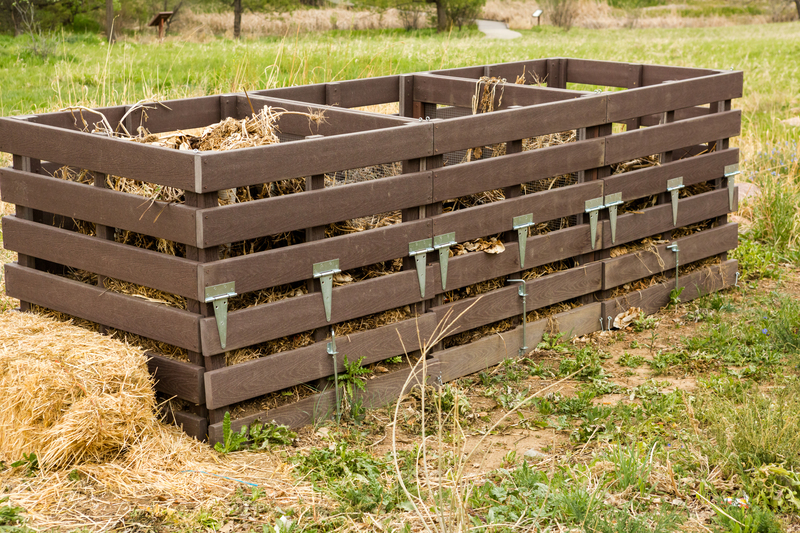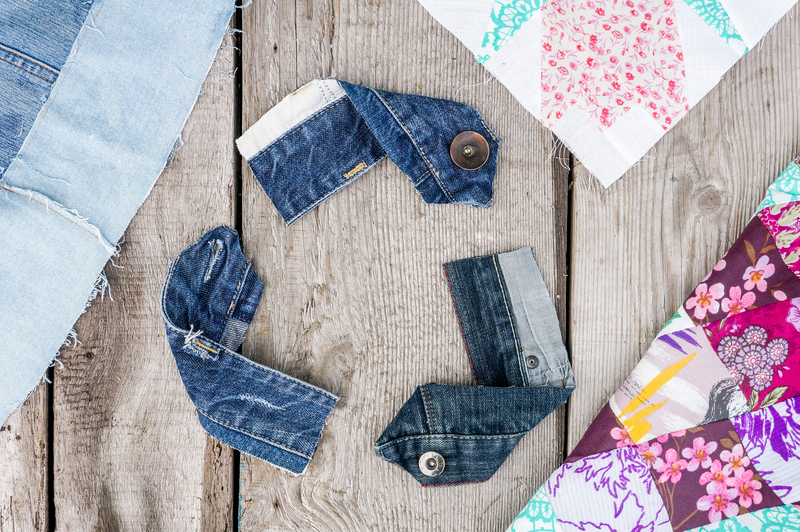The Art of Letting Go: Decluttering for Minimalist Living
Minimalist living is more than just a home design trend--it's a mindful approach to life that fosters clarity, reduces stress, and helps us focus on what truly matters. At the core of minimalist living is the art of letting go; the deliberate act of decluttering, simplifying, and making room for intentional living. In this guide, we'll explore why decluttering is so powerful, practical steps to tidy up your space, the psychology behind holding on to objects, and how you can maintain a minimalist lifestyle to reap long-term benefits.
Why Decluttering Matters in Minimalist Living
Minimalism is about owning less but living more. Decluttering is the essential first step towards this philosophy. Whether you're drawn to minimalism for its aesthetic, its environmental benefits, or the mental clarity it fosters, understanding why letting go is important helps fuel your journey. Here's how decluttering supports minimalist living:
- Reduces Stress: Studies consistently link cluttered spaces to increased stress and anxiety levels.
- Boosts Productivity: A cleaner environment improves focus, creativity, and decision-making.
- Promotes Mindfulness: Minimalism encourages us to be present, spending more time with loved ones and on passions.
- Supports Sustainability: Keeping only what we need means less waste and less consumption, benefiting the planet.
In summary, decluttering for minimalist living is transformative--not just for your environment, but for your mind and lifestyle.

The Psychology Behind Letting Go
Have you ever wondered why it feels so difficult to donate that old sweater or discard childhood souvenirs? The answer lies in the psychology of attachment. We form emotional bonds with objects because they represent memories, achievements, or even aspirations. Overcoming this emotional inertia is central to the art of letting go and mastering decluttered living.
Common Psychological Barriers to Decluttering
- Sentimental Value: Items linked to family, love, or significant milestones evoke strong emotions.
- Fear of Regret: We worry we'll need the item again or miss it after it's gone.
- "Sunk Cost" Fallacy: The belief that because we invested money or time, we must hold on.
- Identity Attachment: Objects may feel like extensions of our past selves or future ambitions.
Understanding these barriers allows you to be gentle with yourself as you work towards minimalist decluttering. Letting go doesn't mean erasing your memories--it means prioritizing your well-being and cultivating a living space that reflects your values today.
Decluttering for Minimalist Living: A Step-by-Step Guide
Ready to embrace minimalist living? Follow this comprehensive roadmap for successful decluttering and lasting minimalism.
1. Define Your Minimalist Vision
Before you start, identify your goals and what "minimalism" means to you. Do you seek calm and order? More time with family? A more sustainable lifestyle? Writing down your intentions keeps you motivated and focused during the process.
2. Start Small and Set Achievable Goals
Overhauling your entire home at once can be overwhelming. Start with a single room, category (like clothes), or even a drawer. Set a timer for 15-30 minutes and stop when it rings.
- Choose a specific category: clothing, books, kitchenware, paperwork, or digital files.
- Work room by room for greater focus and satisfaction.
- Set clear targets (e.g., "I'll reduce my wardrobe by half").
3. The Decluttering Process: Step-by-Step
- Gather Everything: For each category, collect all items in one place. This visual impact helps you realize how much you own.
- Sort Into Piles: Create four groups: Keep, Donate, Sell, and Discard.
-
Ask the Right Questions: For each item, ask yourself:
- Do I use this regularly?
- Does this bring me joy or serve a real purpose?
- Would I replace this if it was lost?
- Is it in good condition?
- Handle Each Item: Touching and examining objects aids decision-making.
- Let Go With Gratitude: When parting with sentimental items, thank them for their service, then release them.
4. Organize What Stays
After reducing your possessions, organize the remaining items in a way that supports function and aesthetics. Use storage solutions that maintain order and simplicity: baskets, dividers, open shelving. Remember--minimalism celebrates space, not storage.
- Group similar items together.
- Keep everyday essentials most accessible.
- Aim for clear surfaces and visible space.
5. Dispose Responsibly
- Donate: Pass on items in good condition to local charities, shelters, or community centers.
- Sell: Try garage sales, online marketplaces, or specialty shops for valuable items.
- Recycle or Trash: Recycle paper, electronics, and textiles where possible. Responsibly dispose of anything unusable.
Tip: Schedule donation drop-offs or pickups right away to avoid backsliding.
Decluttering Tips from Minimalist Experts
Minimalism experts around the world have developed effective strategies for simplifying life. Here are some popular methods you can try:
- KonMari Method (by Marie Kondo): Focuses on keeping only what "sparks joy" and letting go with gratitude. Organize by category, not by room.
- Minimalist Game (by The Minimalists): Remove one item on day one, two items on day two, etc., for a month--making decluttering a daily habit.
- Four-Box Technique: Use four containers labeled: Keep, Donate, Sell, Trash. Handle every item at least once.
- One-In, One-Out Rule: For every new item you acquire, one must leave your home, maintaining balance.
Embracing Minimalist Living Beyond Decluttering
Decluttering is the first leap, but true minimalist living goes further. Here's how to cultivate a minimalist mindset and lifestyle:
Reduce Consumption
- Shop Intentionally: Buy only what you truly need. Avoid impulse purchases by delaying decisions.
- Quality Over Quantity: Invest in durable, well-designed items that last longer and serve multiple purposes.
- Digital Minimalism: Unsubscribe from emails, delete unused apps, and organize digital files for a clutter-free digital life.
Create Minimalist Habits
- Practice daily or weekly mini-declutters.
- Follow mindful routines--meditate, journal, or practice gratitude.
- Set boundaries for incoming possessions.
Design Your Space for Simplicity
- Choose neutral, calming colors that open up rooms visually.
- Use multipurpose furniture to maximize space and function.
- Let natural light in to enhance the openness of your home.
- Remember--the goal is tranquility, not empty sterility.
The Benefits of Living With Less
The rewards of decluttering for minimalist living are immediate and long-lasting. Here's what you can look forward to:
- More Time and Freedom: Caring for fewer things means less cleaning, less organizing, and more moments for what you love.
- Financial Savings: Buying less and selling unused goods improves your finances.
- Enhanced Well-Being: A serene environment reduces stress and supports mental clarity.
- Environmental Impact: Contributing less to landfills and reducing consumption benefits the planet.
Maintaining Your Minimalist Lifestyle
Minimalism is a journey, not a destination. After your initial decluttering, maintenance is key to avoid slipping back into old habits.
Quick Maintenance Tips
- Monthly Reviews: Take a quick inventory of each room. Remove anything that no longer serves you.
- Mindful Buying: Always ask, "Do I truly need this?" before acquiring new items.
- Celebrate Progress: Appreciate your growing ability to let go and live with less.
Minimalism and Emotional Well-being
Minimalist living isn't just about physical space--it improves your emotional space, too. By practicing the art of letting go, you learn valuable lessons about impermanence, gratitude, and self-discovery. Many people report increased happiness, lightness, and a deeper sense of purpose after embracing minimalism.
- Letting Go Builds Confidence: The more you declutter, the more control you feel over your environment and choices.
- Opens Up Opportunities: With fewer distractions, you can pursue hobbies, relationships, and experiences you value.
- Reconnects You with Your Values: Possessions no longer define your identity--your actions and passions do.

Conclusion: Start Your Minimalist Journey Today
The art of letting go is a vital life skill for our modern age. As you declutter and embrace minimalist living, you'll discover that freedom, joy, and contentment are found in the spaces we clear--both around us and within us. Letting go is not about deprivation, but about creating space for growth, creativity, and peace.
Begin today--even with one small drawer or a digital folder. Over time, these steps compound, transforming your home and your life. Minimalist decluttering is a gift to your present and your future self. Embrace it, and enjoy the boundless inspiration that comes from living with intention.
Frequently Asked Questions About Minimalist Decluttering
How do I start decluttering if I feel overwhelmed?
Start small. Tackle a single drawer, shelf, or category. Set a timer for 15 minutes--progress, not perfection, is what matters.
What if my family isn't on board?
Focus on your personal areas first. Lead by example, and over time, family members may become inspired to join.
How often should I declutter?
Aim for a seasonal check-in every three months. For deep minimalism, weekly mini-declutters can help you stay on track.
Is minimalist living suitable for families?
Absolutely! Minimalism helps families focus on shared experiences and simplifies daily routines. Involve kids by making decluttering a fun, rewarding activity.
Why is letting go so hard?
Emotional attachments, fear of regret, and habit make it difficult. Acknowledge your feelings, thank your items, and release with intention. Remember, you're making room for better things to come.
Learn more, take action, and enjoy the serenity that comes from the art of letting go--the heart of minimalist living.